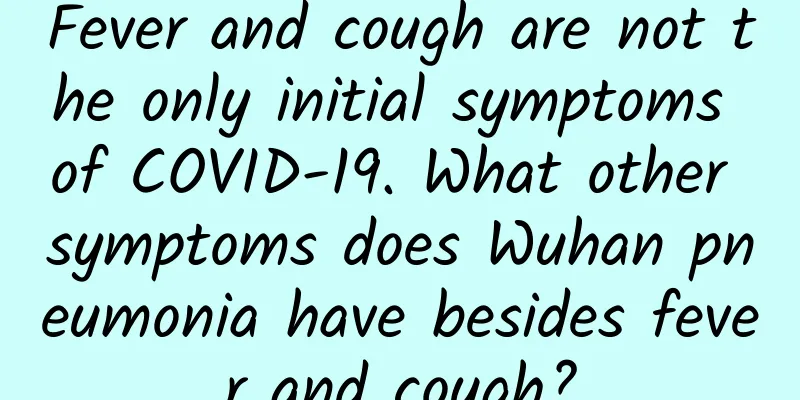What to do if you have blocked fallopian tubes

|
Fallopian tube obstruction is a very common disease in daily life and is a type of female reproductive disease. If this disease is not treated in time, it will affect the normal pregnancy of female friends. Therefore, we must pay attention to it. It is best to go to the hospital for examination and treatment in time. At the same time, we must correct our bad lifestyle in time in daily life and learn to live a scientific and healthy life, so that the condition can be better recovered. What should I do if I have fallopian tube blockage? 1. Physical therapy A common way to treat fallopian tube obstruction is physical therapy, which plays a very important role in the whole process of treating fallopian tube obstruction. In the early stage, some atrophic physical therapy is generally used. However, partial treatment can only improve part of the blood circulation system, and has little effect on the treatment of fallopian tube blockage in the abdomen. 2. Medication The main cause of fallopian tube blockage is gynecological inflammation, which is mostly caused by the growth of bacteria. Gynecological inflammation is short-term, but the fallopian tube blockage caused by it is permanent. Although antibacterial drug treatment has good results, it can only eliminate inflammation, so drugs are used as auxiliary treatment. 3. Injection therapy Under hysteroscopy, therapeutic fluid is introduced into the bilateral fallopian tube cavities of female patients, which will cause partial adhesion of the bilateral fallopian tube cavities and some moderate to severe obstruction symptoms to be separated and unblocked to a certain extent. Causes of Fallopian Tube Blockage 1. Gynecological inflammation Chronic pelvic inflammatory disease can often cause partial or complete closure of one end of the fallopian tubes that receives the oocyte, or cause adhesions of the lining mucosa of the fallopian tubes, causing the lumen to become smaller or closed. If the inflammation is severe, it can cause the fallopian tubes on both sides to lose their normal peristaltic function, become increasingly stiff and distorted, and completely block the lumen, ultimately leading to the loss of fertility. Salpingitis can cause adhesions in the narrowest part and fimbria of both fallopian tubes, resulting in narrowing of the lumen or complete closure, leading to infertility. 2. Appendectomy perforation Women who have a history of appendectomy have an increased chance of bilateral fallopian tube damage. This is because the distance between the appendix and the fallopian tubes is very close, so the infection at the appendix can easily spread to the fallopian tubes, causing inflammation of the fallopian tubes, and finally adhesion and blockage, causing infertility. 3. Pelvic Adhesions This condition usually covers the uterus, ovaries and the tail ends of the fallopian tubes, or adheres the fallopian tubes to other tissues. Especially for women who have undergone pelvic surgery, most of them have adhesion problems. 4. Infection caused by miscarriage Miscarriage can cause inflammation of a woman's reproductive organs and may also leave scar tissue in her fallopian tubes, thereby blocking or damaging the inside of her fallopian tubes. |
<<: Causes of HPV1618 positive
>>: Is low-risk HPV42 positive serious?
Recommend
How to make a sandwich? How to eat a sandwich
In daily life, many vegetables are naturally low-...
How long can a hyaluronic acid injection last
Many people have skin quality problems, so they c...
How to suppress uterine contractions during pregnancy
Many pregnant women will experience uterine contr...
Ovarian cystadenocarcinoma
Ovarian cystadenoma, translated into English as c...
[Fat Bear Science] The Physical Examination Center summarizes 10 questions about tumor screening. Are there any that you are concerned about?
It’s the end of the year again How is your medica...
How does the body react after menopause?
Menarche is a normal physiological manifestation ...
Analysis of the disease on the right side of uterus
Many female friends in life often find that they ...
What methods can relieve morning sickness
Many people experience morning sickness during pr...
What causes headaches in women?
Headaches occur from time to time. For example, m...
What to do if your menstrual flow is light
We all know that menstruation is a phenomenon tha...
How is cervicitis cured?
Important reminder: Cervicitis is a gynecological...
A woman dreams of having a bald head
In reality, many people suffer from the trouble o...
What are the causes of abdominal pain in early pregnancy?
Pregnant. It is a very happy but also a very dist...
How long does it take to recover after childbirth?
The physical fitness of many mothers who have jus...
What is the reason for bleeding when having sex with my husband?
If the bleeding during the first sexual intercour...









